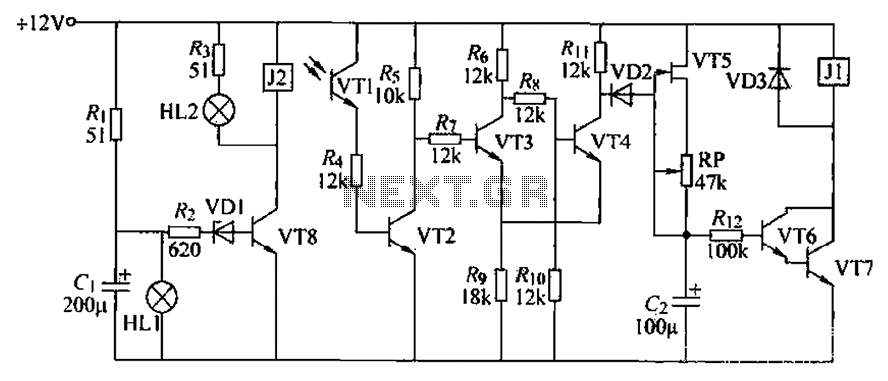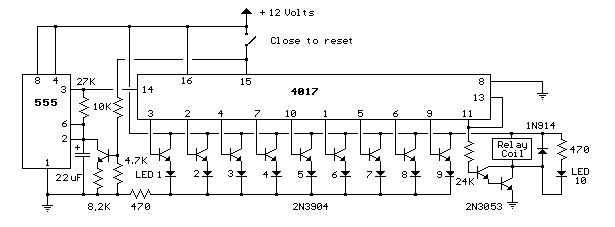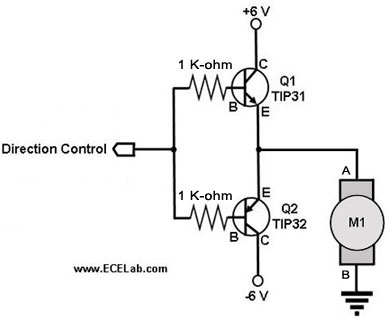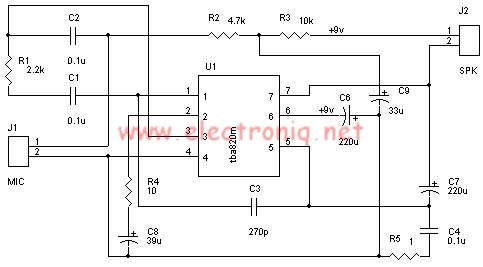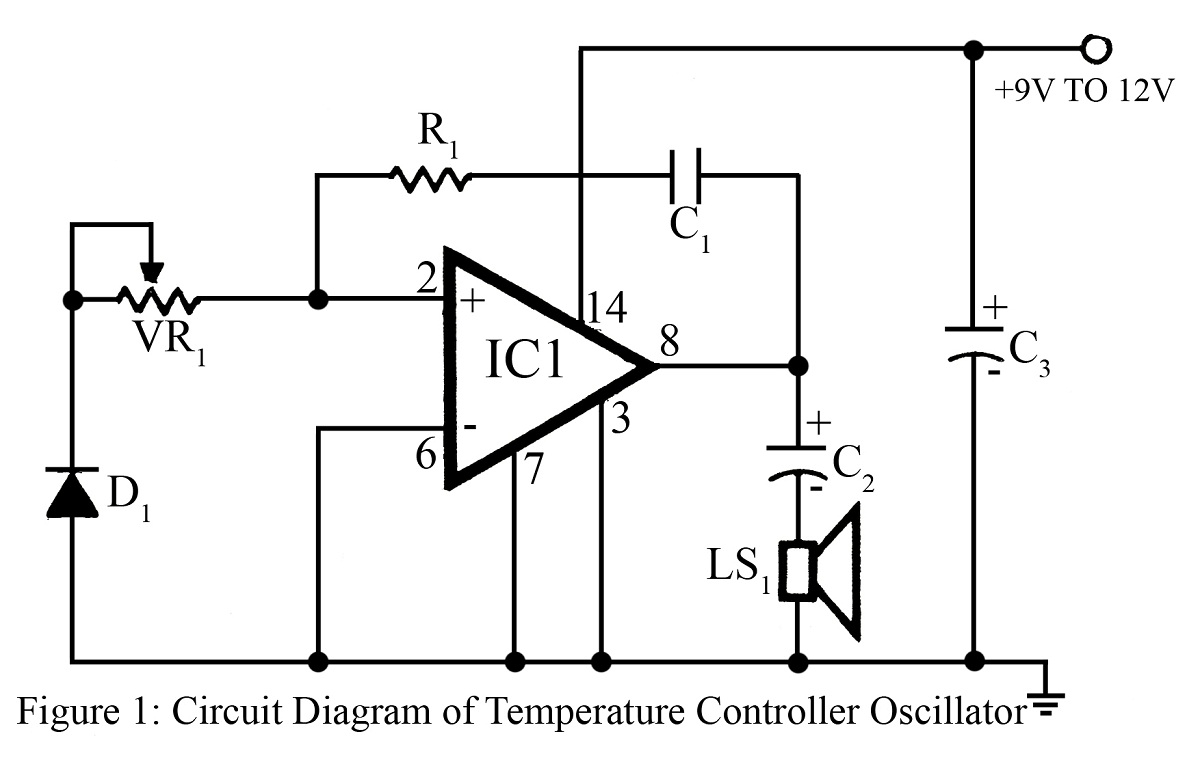
555 toilet floodlight and ventilator automatic control circuit
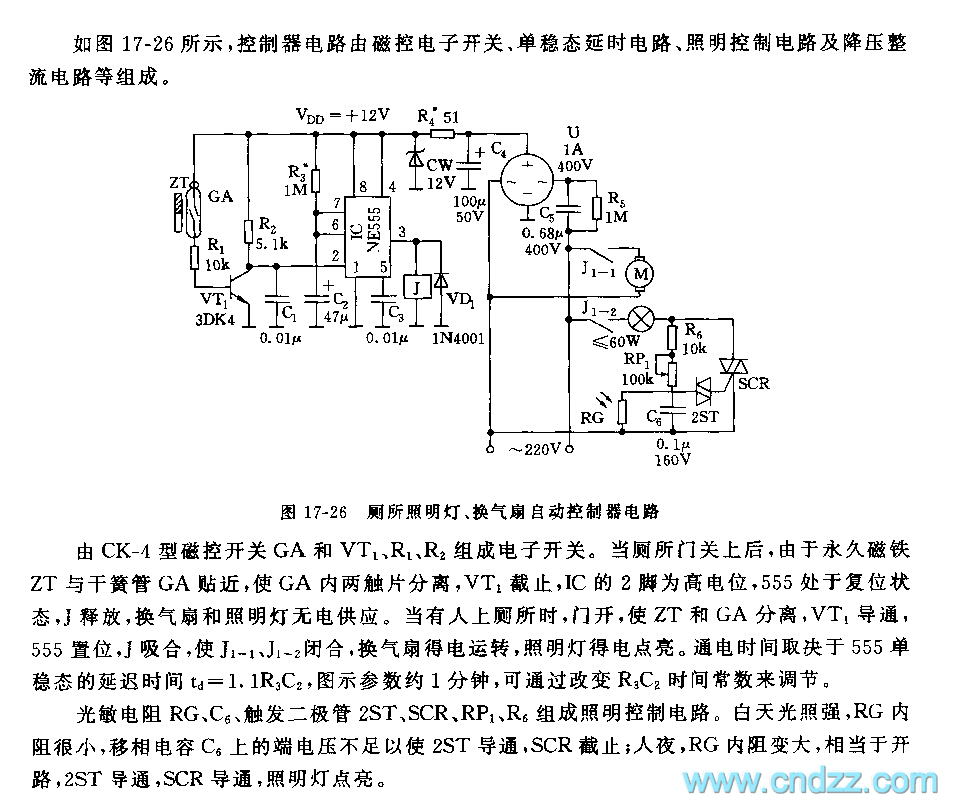
The electronic switch consists of the CK-4 type magnetic control switch and the components VT1, R1, and R2. When the bathroom door is closed, the permanent magnet ZT and the reed switch GA come into proximity, which separates the two contact plates of GA. This action causes VT1 to turn off, resulting in a high-level voltage at pin 2 of the integrated circuit (IC). Consequently, the 555 timer enters a reset state, releasing the relay J, which cuts off power to the ventilation fan and light.
The electronic switch design utilizes a CK-4 magnetic control switch, which is sensitive to the presence of a magnetic field. The operation begins when the bathroom door is closed; the permanent magnet ZT, mounted on the door, approaches the reed switch GA, which is fixed to the door frame. This proximity causes the reed switch to open, effectively interrupting the circuit.
In this configuration, the components VT1, a transistor, along with resistors R1 and R2, serve to control the current flow based on the state of the reed switch. When the reed switch opens, VT1 is turned off, leading to a high voltage level at pin 2 of the 555 timer IC. This high voltage signals the timer to enter a reset state, which disables the output.
The output of the 555 timer is connected to a relay, labeled J, which controls the power supply to the ventilation fan and light. When the 555 timer is reset, the relay is released, effectively cutting off the power to these devices. This design is particularly useful in applications where energy conservation is desired, ensuring that lights and fans are not left on unnecessarily when the bathroom is not in use.
In summary, this electronic switch system is an efficient solution for controlling lighting and ventilation in a bathroom setting, leveraging magnetic sensing technology to automate power management based on door status. The integration of a 555 timer and relay allows for reliable operation while minimizing energy consumption.The electronic switch is composed of the CK-4 type magnetic control switch and the VT1?R1?R2. When the bathroom door closes, the permanent magnet ZT and the reed pipe GA get close to separate the two touch tablets of GA, VT1 cuts off, pin-2 of IC has the high level voltage, 555 is in the reset state, J releases, the ventilation fan and light has no power. Wh.. 🔗 External reference
The electronic switch design utilizes a CK-4 magnetic control switch, which is sensitive to the presence of a magnetic field. The operation begins when the bathroom door is closed; the permanent magnet ZT, mounted on the door, approaches the reed switch GA, which is fixed to the door frame. This proximity causes the reed switch to open, effectively interrupting the circuit.
In this configuration, the components VT1, a transistor, along with resistors R1 and R2, serve to control the current flow based on the state of the reed switch. When the reed switch opens, VT1 is turned off, leading to a high voltage level at pin 2 of the 555 timer IC. This high voltage signals the timer to enter a reset state, which disables the output.
The output of the 555 timer is connected to a relay, labeled J, which controls the power supply to the ventilation fan and light. When the 555 timer is reset, the relay is released, effectively cutting off the power to these devices. This design is particularly useful in applications where energy conservation is desired, ensuring that lights and fans are not left on unnecessarily when the bathroom is not in use.
In summary, this electronic switch system is an efficient solution for controlling lighting and ventilation in a bathroom setting, leveraging magnetic sensing technology to automate power management based on door status. The integration of a 555 timer and relay allows for reliable operation while minimizing energy consumption.The electronic switch is composed of the CK-4 type magnetic control switch and the VT1?R1?R2. When the bathroom door closes, the permanent magnet ZT and the reed pipe GA get close to separate the two touch tablets of GA, VT1 cuts off, pin-2 of IC has the high level voltage, 555 is in the reset state, J releases, the ventilation fan and light has no power. Wh.. 🔗 External reference
